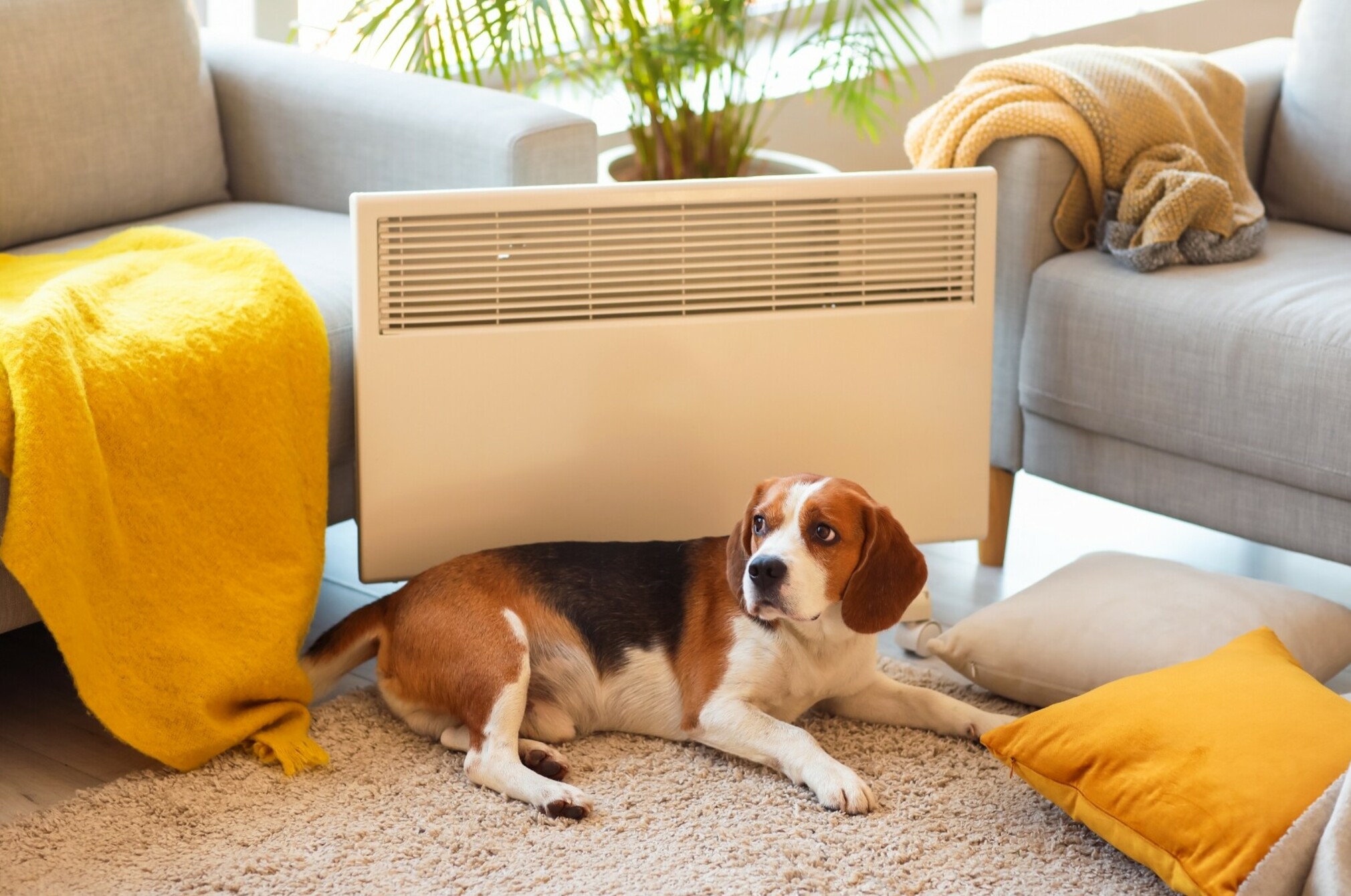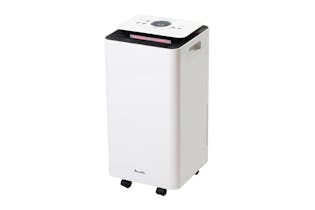Home improvements: The healthy homes standards five years on

In the past, New Zealand renters have had to endure some pretty poor-quality housing. And while it’s tenants that bear the brunt of cold, damp, living conditions, it became clear over the last decade that taxpayers and employers were paying a price too. In 2019, the healthy homes standards were introduced to make renting a better, healthier experience, and to reduce the economic burden of housing-related healthcare costs and sick days.

“If you think back to the early 2000s, the general idea was, if you were cold, put on a jumper,” said Dr Lucy Telfar-Barnard. Telfar-Barnard is a researcher at the University of Otago’s Department of Public Health. She is an expert on the relationship between disease and housing quality.
But grinning and bearing cold, damp housing seriously damages tenants’ health.
In 2021, researchers at the University of Otago in partnership with the economic and public policy research institute Motu Economic and Public Policy Research looked at the relationship between housing and health.
Their work showed that, between 2010 and 2017, damp or mouldy housing conditions were associated with 6,300 hospitalisations and 37,000 nights spent in hospital in New Zealand annually.
This came at a significant cost to the taxpayer. Unhealthy housing caused $36 million in direct costs to the healthcare system, according to the study. It also cost approximately $141 million per year to the public sector more widely.
“Our research group did some work that showed insulation not only made people’s homes warmer but also made people healthier. It kept them away from the doctor and helped them miss fewer days from school and work,” Telfar-Barnard said.
Alongside the benefits of insulation, the researchers found:
- heating makes a positive difference to people’s health
- the presence of mould in homes is closely associated with asthma, stress and mental health issues.
600,000 households in New Zealand live in rented accommodation, and the quality of rentals is worse than owner-occupied homes. Addressing these issues is vital to improving tenants’ health and lowering health costs for the taxpayer.
In 2019, the Residential Tenancies (Healthy Homes Standards) Regulations were implemented. All rental accommodation is required to meet the standards by July 2025.
The healthy homes standards
The healthy homes standards aim to ensure homes are warm, dry and well-ventilated to avoid the formation of mould and related respiratory and cardiovascular illness.

The standards set out minimum requirements for heating, insulation, ventilation, moisture ingress and drainage, and draught stopping.
Landlords are responsible for ensuring their homes meet the standards. Those who don’t may be liable for damages of up to $7,200, or $50,000 for six or more tenancies.
The impact of the healthy home standards
The healthy homes standards have quickly driven a significant improvement in the quality of rental accommodation.
According to Te Tūāpapa Kura Kāinga Ministry of Housing and Urban Development’s (HUD’s) research, between 2020 and 2024, the proportion of private renters who said:
- their homes could be heated to a comfortable temperature year round increased from 50% to 77%
- their homes had no problem with dampness or mould increased from 43% to 55%
- they had extractor fans that vent to the outside rose from 44% to 63% in the case of bathrooms and from 44% to 66% in the case of kitchens.
There have been significant improvements to the quality of New Zealand’s rental stock because of this legislation. While issues remain, Telfar-Barnard feels the standards are a huge success.
“We’ve seen massive improvements in the proportion of rental properties with decent heating, insulation and ventilation. Just because it’s not perfect doesn’t mean it’s not a whole lot better than what it was previously.”
Where the standards fall short and how they can improve
The standards have driven significant change in a short space of time. However, issues remain that allow a minority of landlords to continue to profit from sub-standard housing. And taxpayers and tenants are paying the price.
The problem: Enforcement is weak
Every expert featured in this article agrees the current framework for enforcing the standards doesn’t work.
David Faulkner is the general manager for property management at Property Brokers. “The standards are too open to interpretation,” he said.
“There’s no training and no qualification required to call yourself a healthy homes assessor, so there’s no consistency in how the standards are applied.
“We’ve had one case where we had three healthy home assessments done on one house with three different outcomes.”
Further, if healthy homes issues do arise, too much responsibility for enforcement falls on the tenant.
“At the moment, enforcement of the standards relies on the tenant noticing there's an issue, informing the landlord, and if the landlord doesn’t deal with it, the tenant needs to take the problem to the tenancy tribunal,” said Telfar-Barnard.
The solution: An accreditation for healthy homes assessors
Our experts agree that the development of an accreditation would significantly improve how the standards are enforced.
“I would love to see a basic qualification for healthy homes assessors, rather than having landlords, or anyone who calls themselves an assessor, being able to falsify information, either because they don’t understand the standards or don’t want to comply,” Faulkner said.
And ideally, the accredited assessors would be required to complete their assessment before a tenancy commenced.
“Rather than relying on tenant enforcement, it would be good to have an inspection before the tenant moved in, performed by an appropriately qualified and certified assessor,” Telfar-Barnard said.
The problem: Low housing supply and no-cause evictions undermine the standards
Some suggest the undersupply of housing and return of no-cause evictions undermine the healthy home standards.
If there were surplus rental properties, an independently accredited healthy homes certification might represent a competitive advantage for landlords looking to fill their properties or receive higher rents.
But at present, tenants may be reluctant to raise issues before starting or during a tenancy for fear of being passed over for housing or evicted from their property. This is likely to be made worse by the return of no-cause evictions.
The topic of no-cause evictions was discussed in parliament. It was put to the housing minister Chris Bishop that landlords could use no-cause evictions in a retaliatory fashion if tenants raised healthy homes complaints.
Bishop dismissed the concern, saying retaliatory eviction is illegal. But, according to Telfar-Barnard, it happens and needs to be addressed.
“This is like saying murder doesn’t happen because it’s illegal. It happens, and that’s why we have laws against it … We know that retaliatory notice happens because the tenancy tribunal finds that they happen.”
The solution: Tenants need to know their rights and landlords’ obligations
While no-cause evictions exist, the best thing tenants can do if a healthy homes issue arises is learn their rights and their landlord’s obligations.
HUD data shows tenants are less knowledgeable about the healthy homes standards than landlords. This may prevent tenants from exercising their rights.
“Tenants aren’t as informed as they could be. Tenants have a lot of rights in New Zealand, but they don’t necessarily know how to exercise them,” said Faulkner.
“If a house is non-compliant, you can issue your landlord with a 14-day notice; if the landlord then comes back and gives you notice, you’ve got plenty of rights.
“If you think you’ve been given retaliatory notice, say so. If the tenancy tribunal finds the landlord has given you retaliatory notice, [the landlord] will face significant exemplary damages.”
Telfar-Barnard also recommended raising any issue in writing – just in case it’s followed by an eviction notice.
The problem: Standards do not ensure healthy housing
Lucy Watson is a spokesperson for the advocacy group Renters United. She described the standards – such as the requirement for one heating source in a property – as a “bare minimum”.
“There are additional lengths landlords or property managers can go to to ensure their houses are warm, dry and safe for renters,” Watson said.
And because the standards are relatively low, even when a poor-quality house meets them, the conditions for negative health outcomes can persist, according to Telfar-Barnard.
“There are circumstances where there are exemptions to the standards or the structure of the property is so poor, which can mean a home meets the standards, but mould can still grow.”
The solution: Focus on the outcome not the process
Some homes are meeting healthy homes standards despite not being healthy. Telfar-Barnard would like to see the focus shift from making sure steps are taken to attempt to make a property healthy to considering whether these steps have actually worked.
“It would be good to see a change in the regulation that says that, if there is mould, the causes need to be addressed,” she said.
Faulkner agreed we need to focus on outcomes rather than process. He suggested adopting energy efficiency ratings for properties, like we have with refrigerators or washing machines.
“Every house could have an energy rating. A tenant or purchaser could look at that rating and get a realistic idea of how much it’s going to cost to heat the property, which would help them to budget. If a property doesn’t meet the standard, then it can’t be rented, and that would encourage landlords to improve their property and allow them to charge higher rents or be able to rent it in the first place.”
We've tested 22 dehumidifiers.
Find the right one for you.
AusClimate

AusClimate
.jpg&w=315&q=75)
 This report is free thanks to funding from
This report is free thanks to funding from
Member comments
Get access to comment